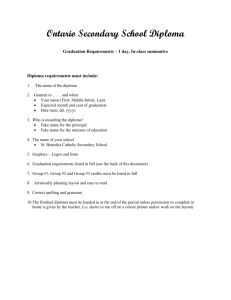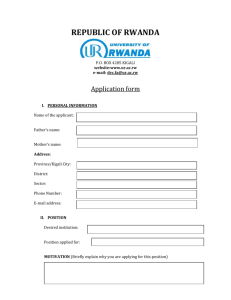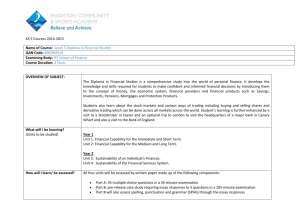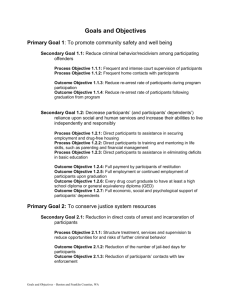Elementary At-Risk Matrix Student Name Is student Has student
advertisement
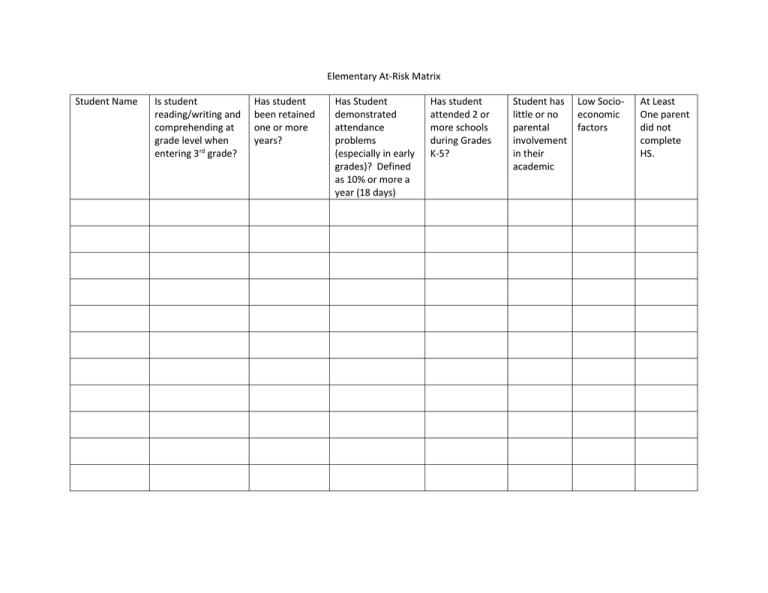
Elementary At-Risk Matrix Student Name Is student reading/writing and comprehending at grade level when entering 3rd grade? Has student been retained one or more years? Has Student demonstrated attendance problems (especially in early grades)? Defined as 10% or more a year (18 days) Has student attended 2 or more schools during Grades K-5? Student has Low Sociolittle or no economic parental factors involvement in their academic At Least One parent did not complete HS. Middle At-Risk Matrix Student Name Student is making either D’s or F’s in Language Arts or Mathematics or at least 2 grade levels behind. (if in both subjects at 8th grade chances of HS diploma are 50%) Has student been retained one or more years? Is the student at least 1-2 years older than other students in his grade? Is student attending school less than 80% of the school year? This is exacerbated if policies prohibit them from making up work) Is student considered a behavior problem by Teachers and Administrators? Student has Low Sociolittle or no economic parental factors involvement in their academic At Least One parent did not complete HS. High School At-Risk Matrix Student Name Did student earn at least a 2.5 in Algebra 1 or pass the EOC? Has the student earned English 1 Credit with a C or higher? Is the student under-credited and over-aged? Can they reasonably graduate with their graduation cohort? Is student attending school less than 80% of the school year? This is exacerbated if policies prohibit them from making up work)***** Does student have at least one adult whom he/she trust and believes is his/her advocate? Is student involved in clubs, activities, sports in which they enjoy and actively participate in? Low Socioeconomic factors/ Parent Involvement is low. At Least One parent did not complete HS. **** 43% of students stated they had missed too many days of school and could not catch up on their work. It is imperative to identify attendance issues early. This is essential that classroom teachers are involved in interventions. Dropout Prevention Newton Conover City Schools October 2013 1-3% Strategic Targeted Interventio n 2-4% Minimal Credit Diploma Red Devil Success 4-6% 87-93% NC High School Diploma Dropout Prevention Newton Conover City Schools October 2013 Alternate Pathways to Graduation Minimal Credit Diploma (21 Credit) Red Devil Success Program Combined Program Incorporating Both Minimal Credit and Red Devil Success Identification of At-Risk Students Requirements for Any Pathway At least a Junior in High School Not on target to Graduate with Cohort or Age Group Academic Deficits, Attendance Issues, Mental Health diagnosis or Behavioral Issues that impede learning Minimal Credit Diploma Academic Deficits, not with Graduation Cohort, likely to drop due to lack of content mastery, needs revised diploma track for success Possible strategies include: 21 Credit track, credit recovery, full course credit on Odysseyware/Apex Matrix of At-Risk Services Combined approach (Strategic Targeted Intervention) Red Devil Success Academic Deficits, not with Graduation Cohort, needs guidance and structure but can complete 28 credit diploma Possible Strategies include: attendance recovery (seat time), credit recovery, schedule adjustments, case management Academic Deficits, attendance, mental health or behavioral issues that impede learning, not with Graduation Cohort, needs guidance and structure with minimal credit diploma. Possible use of online learning and off-site learning due to special circumstances. Specialized student need based approach (often student is not appropriate for home bound but would benefit from off-site learning or online student paced learning. Possible Strategies include: Online learning, flexible schedules/shortened day, off-site learning, homebound where appropriate, NCVPS, Odysseyware/Apex online classes

